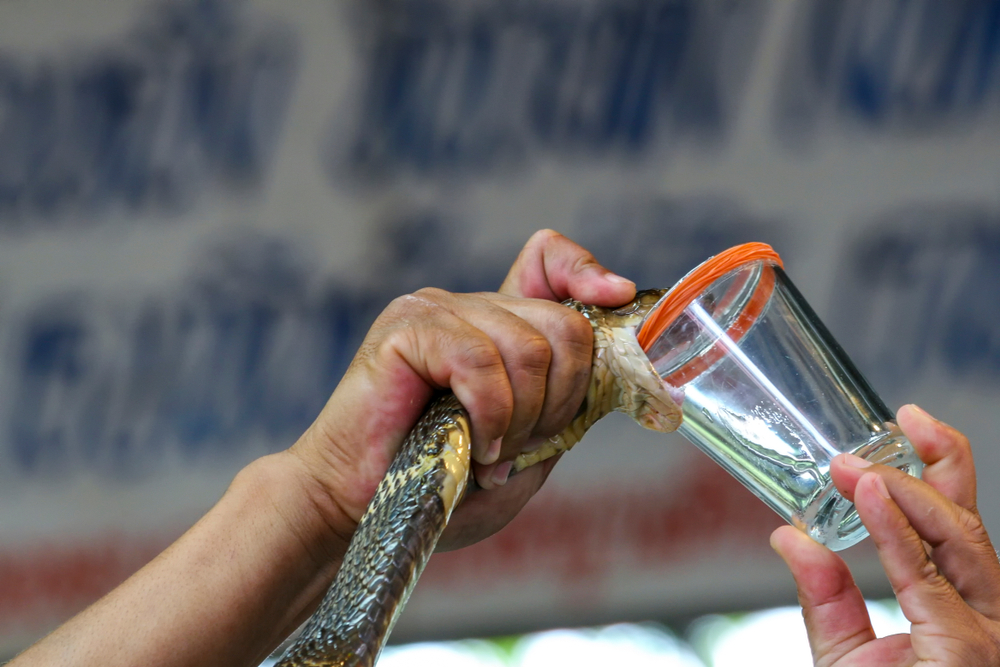Pioneering Discovery in Neutralising Deadly Snake Venoms
In a significant leap towards combating snakebite envenomings, scientists have developed an antibody that neutralises the venom of various deadly snakes prevalent across Africa, Asia, and Australia.
The study, detailed in Science Translational Medicine, introduces a synthetic antibody capable of blocking the lethal effects of venoms from notorious snakes such as black mambas and king cobras. This research heralds the advent of a universal antivenom, marking a substantial advancement in snakebite treatment.
Joseph Jardine, PhD, the study’s senior author and assistant professor of immunology and microbiology at Scripps Research, highlighted the antibody’s significance. He stated, “This antibody works against one of the major toxins found across numerous snake species that contribute to tens of thousands of deaths every year”. The creation of this antibody represents hope for those in regions most affected by snakebites, potentially saving thousands of lives annually.
Revolutionising Snakebite Antivenoms
The shift towards a synthetic human antibody library for antivenom development represents a change in the fight against snakebite envenomings. Traditional antivenoms require the identification of the snake species to match the antivenom to the venom. This process is fraught with challenges, especially in remote areas where snake bites are most prevalent. Moreover, these antivenoms, derived from animals such as horses, carry risks of serum sickness and anaphylaxis. This is due to the body’s reaction to foreign animal proteins.
The research introduces a novel approach by screening billions of human antibodies to find one, 95Mat5. This can neutralise the α-neurotoxins in the venom of snakes from the Elapidae family. The Elapidae family includes some of the most dangerous snakes known to humans, such as cobras, kraits, and mambas.
This method harnesses recombinant toxin proteins created in the lab to identify antibodies capable of blocking these toxins. It’s innovative and safer than traditional methods, as it avoids live snake venom extraction and animal immunization.
Implications for Global Health
The implications of developing a universal antivenom are profound, particularly for regions where snakebite envenoming poses a significant public health challenge. Annually, over 100,000 deaths are attributed to snakebites, with the majority occurring in Asia and Africa. The traditional antivenom production process involves immunising animals with snake venom and then harvesting the antibodies. This method is both species-specific and fraught with potential for severe allergic reactions in humans.
This new research, by creating a synthetic antibody that effectively neutralises toxins from a wide range of snake species, offers a promising solution to these challenges. Joseph Jardine elaborated on the potential impact, stating, “This could be incredibly valuable for people in low- and middle-income countries that have the largest burden of deaths and injuries from snakebites”. The universal antivenom concept moves beyond the limitations of current treatments, providing a hope for reducing the global burden of snakebite mortality and morbidity.
Moreover, the current antivenoms’ production is not only cumbersome but also limited. The need to identify the snake species to select the appropriate antivenom creates complications.
This new approach, which leverages a synthetic human antibody library, simplifies the treatment process. By eliminating the need for species identification, this new approach may save valuable time and reducing the incidence of incorrect or delayed treatments.
Next Steps and Challenges
While tthis represents a monumental step towards a universal antivenom, the journey is not without its challenges. The current research effectively addresses venoms from the Elapidae family of snakes. However, the venoms of vipers, another major family of venomous snakes, remain a hurdle. The Scripps Research team is already pursuing the development of broadly neutralising antibodies against additional toxins found in viper venoms. As well as other toxin classes present in elapid venoms.
The complexity of snake venom necessitates a comprehensive approach to antivenom development. Jardine’s team is exploring the possibility of combining 95Mat5 with other antibodies to create a cocktail capable of neutralising a broader spectrum of snake venoms.
Another significant challenge lies in the scalability and accessibility of the antivenom. Ensuring that this life-saving treatment is affordable and available to those in the most remote and impoverished regions is crucial. The transition from laboratory success to real-world application will require concerted efforts from researchers, policymakers, healthcare providers, and international health organizations.
The development of 95Mat5 is not just a milestone in antivenom research. It is a stepping stone towards a future where the fear and fatalities associated with snakebites are significantly diminished. As this research progresses, it has the potential to save countless lives and transform the landscape of global health.
References
- Snaking toward a universal antivenom. (2024, February 24). ScienceDaily. https://www.sciencedaily.com/releases/2024/02/240221160542.htm
- Khalek, I. S., Senji Laxme, R. R., Nguyen, Y. T. K., Khochare, S., Patel, R. N., Woehl, J., Smith, J. M., Saye-Francisco, K., Kim, Y., Misson Mindrebo, L., Tran, Q., Kędzior, M., Boré, E., Limbo, O., Verma, M., Stanfield, R. L., Menzies, S. K., Ainsworth, S., Harrison, R. A., . . . Jardine, J. G. (2024, February 21). Synthetic development of a broadly neutralizing antibody against snake venom long-chain α-neurotoxins. Science Translational Medicine, 16(735). https://doi.org/10.1126/scitranslmed.adk1867













